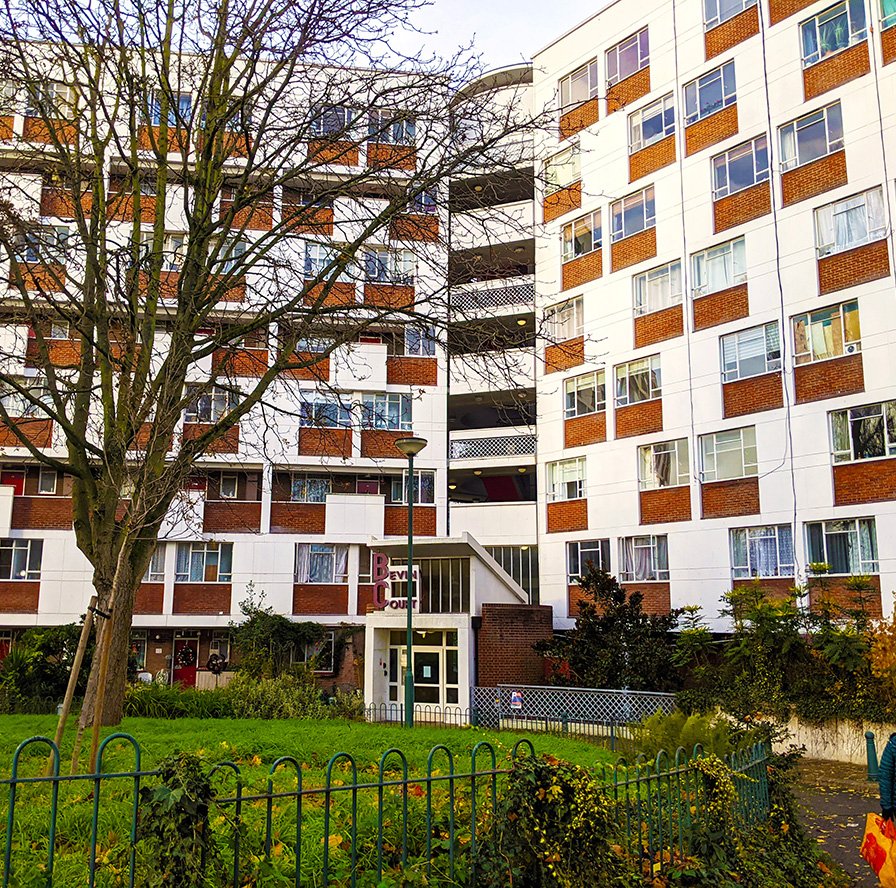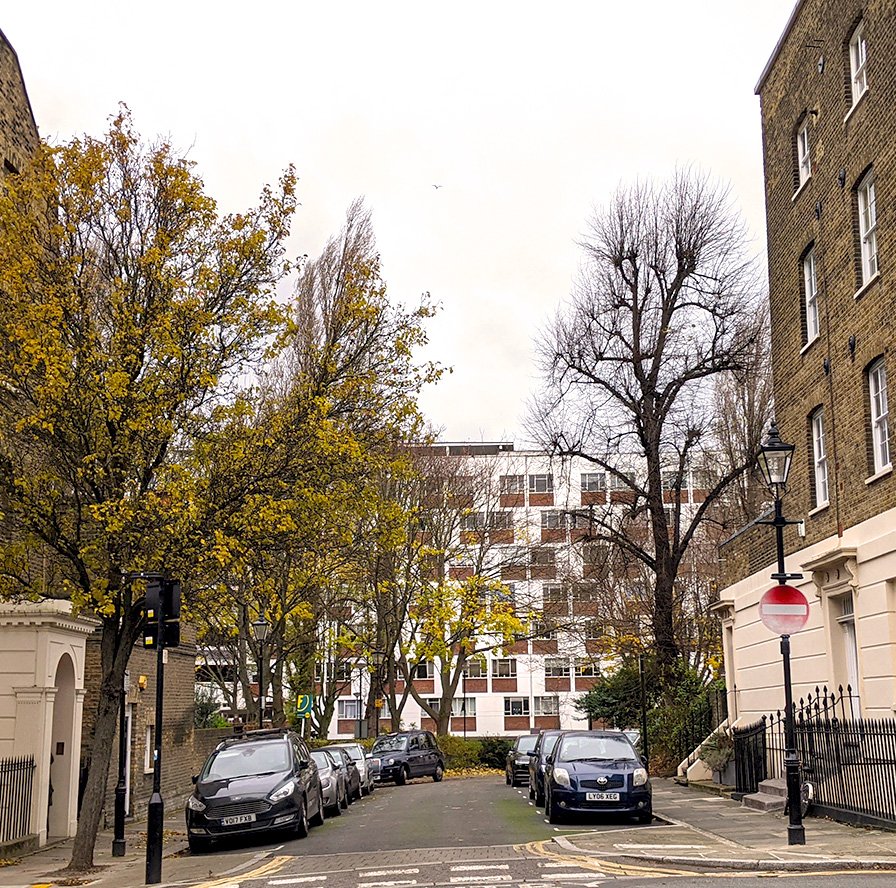How to reduce energy use in listed buildings without compromising the original design
Cullinan Studio has achieved planning approval for energy use improvements to Lubetkin’s Grade 2* listed Bevin Court in the London Borough of Islington.
Improving energy efficiency of existing buildings has many benefits including better living conditions and reduced energy bills, and with the operation of buildings estimated to account for around 30% of the UK’s total carbon emissions, it is essential to help meet net zero carbon targets. But how do you improve the energy performance of listed buildings without compromising the original design?
Bevin Court is a Grade 2* listed residential block designed by Berthold Lubetkin in 1954. It is a landmark Modernist building in the heart of Islington. The building has a triaxial plan, with a striking staircase forming its centrepoint. Set within peaceful communal gardens in Finsbury, in the New River Conservation Area, Bevin Court is surrounded by residential streets, student housing and offices.
Cullinan Studio has been successful in achieving planning permission and Listed Building Consent for a pioneering scheme to update the heating and hot water supply for this communal housing block. Designed in close consultation with the London Borough of Islington to ensure the listed building is not visually altered, the proposal uses a cascade system to replace the original gas boilers with environmentally friendly air source heat pumps (ASHP), providing an up to date, economical and sustainable heat supply. The updated system will supply heat and hot water to 115 properties on seven storeys of Bevin Court and 12 maisonettes in the adjacent Holford House, and will lead the way in supplying renewable heating for Islington housing to help achieve their goal of net zero carbon by 2030.



